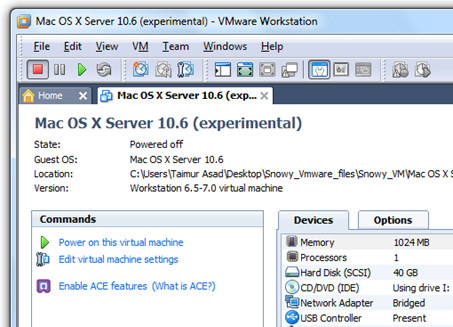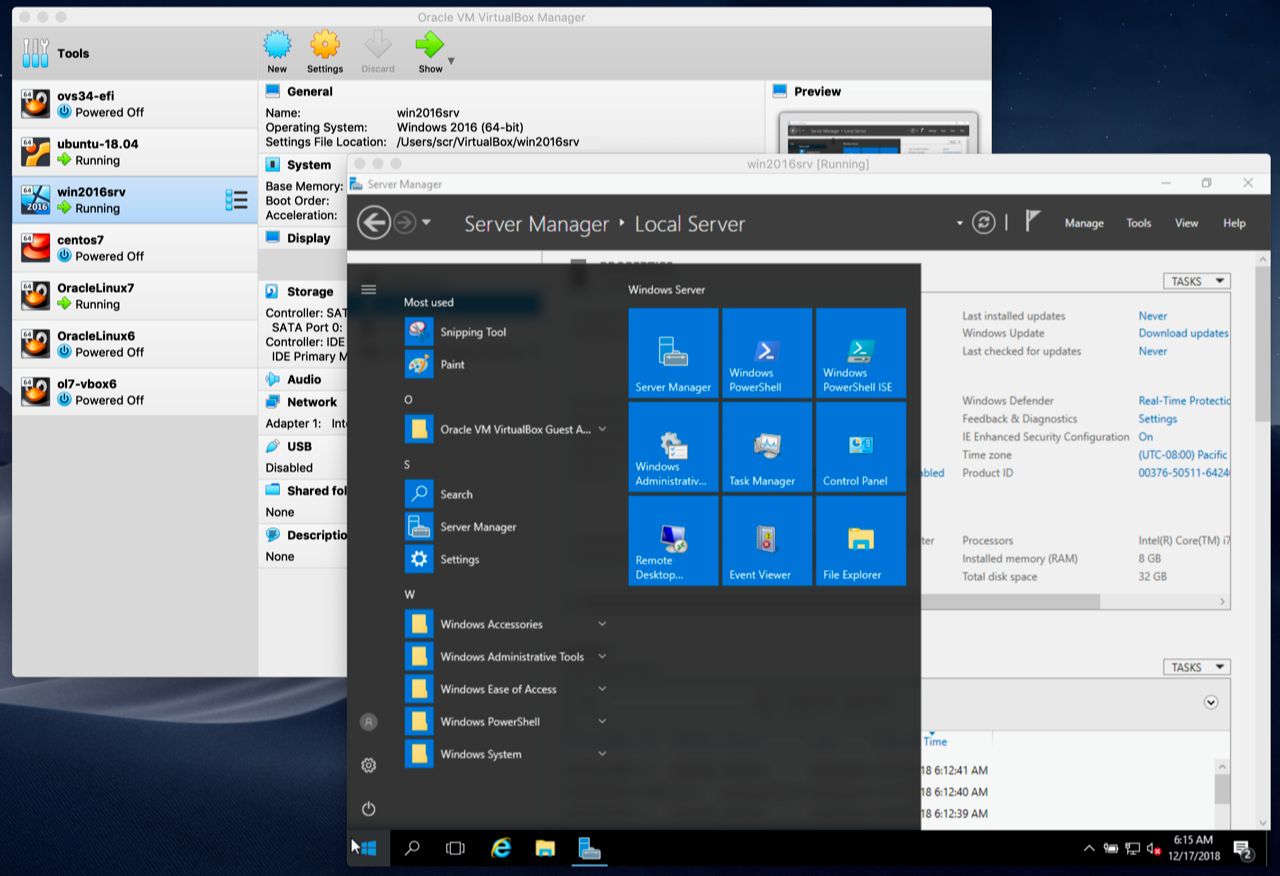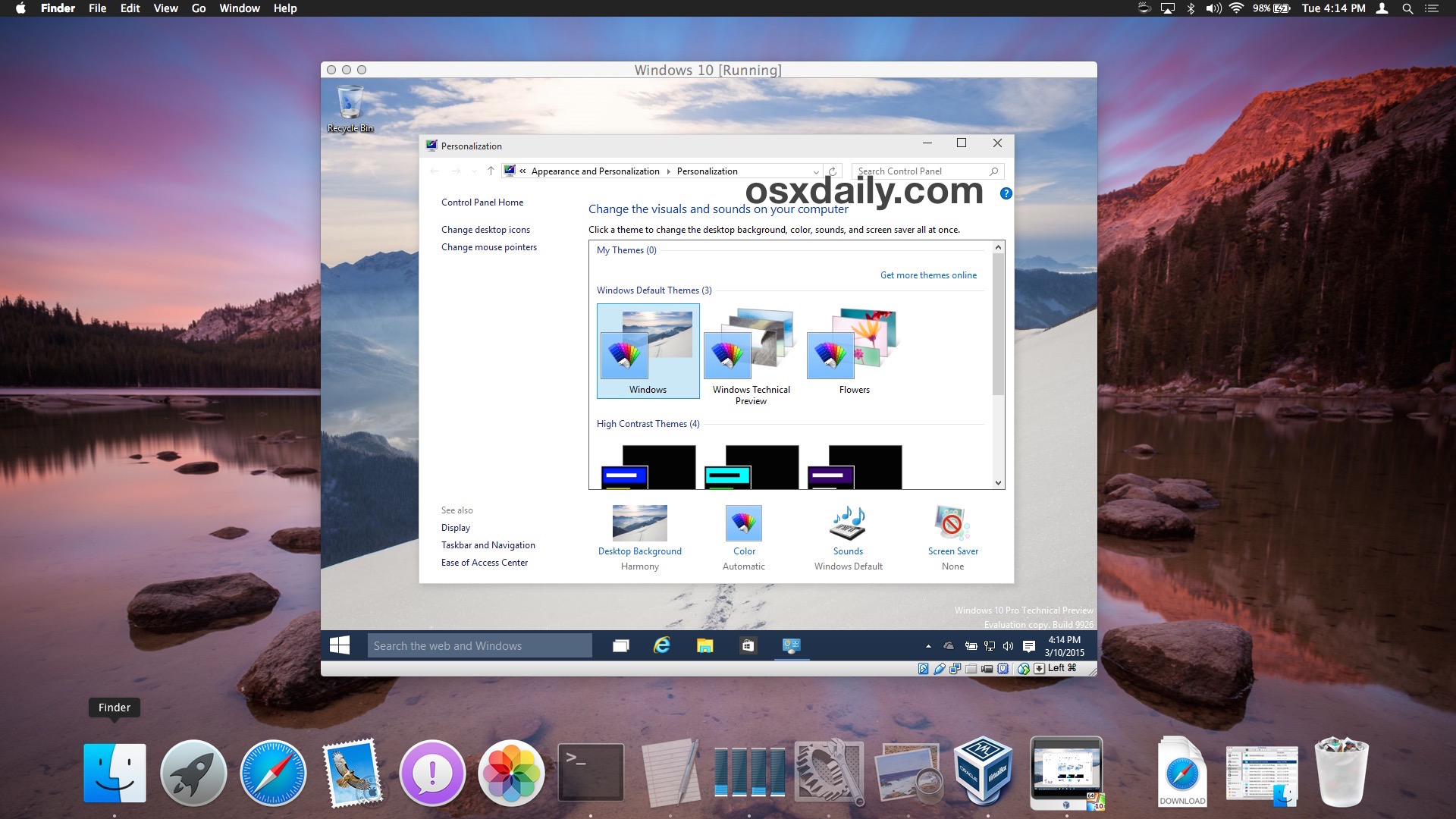
- #How to setup os x vm for windows install#
- #How to setup os x vm for windows Patch#
- #How to setup os x vm for windows code#
- #How to setup os x vm for windows windows#
VBoxManage setextradata "macOS Big Sur" "VBoxInternal/Devices/smc/0/Config/DeviceKey" "ourhardworkbythesewordsguardedpleasedontsteal(c)AppleComputerInc" VBoxManage setextradata "macOS Big Sur" "VBoxInternal/Devices/efi/0/Config/DmiBoardProduct" "Mac-AA95B1DDAB278B95" VBoxManage setextradata "macOS Big Sur" "VBoxInternal/Devices/efi/0/Config/DmiSystemVersion" "1.0" VBoxManage setextradata "macOS Big Sur" "VBoxInternal/Devices/efi/0/Config/DmiSystemProduct" "iMac19,1" Here are the commands: VBoxManage.exe modifyvm "macOS Big Sur" -cpuidset 00000001 000106e5 00100800 0098e3fd bfebfbff For instance, my virtual machine name is macOS Big Sur. Adjust the command to match the name of your virtual machine. Now, enter the following commands, one by one. Use the following command to locate the Oracle VirtualBox directory: cd "C:\Program Files\Oracle\VirtualBox\" Then right-click the Best Match, and select Run as Administrator. If your menu only shows the PowerShell option, type command into your Start menu search bar.
#How to setup os x vm for windows windows#
Once closed, press the Windows key + X, then select Command Prompt (Admin) from the menu.

The commands will not execute properly if VirtualBox or any of its associated processes are running.
#How to setup os x vm for windows code#
To do this, you need to enter some code using the Command Prompt.
#How to setup os x vm for windows Patch#
To get it up and running, you have to essentially patch VirtualBox before the macOS virtual machine will function. In its current configuration, VirtualBox doesn't work with your macOS disk image. It still isn't quite time to fire up your macOS Big Sur virtual machine. Use the Command Prompt to Add Custom Code to VirtualBox Finally, head to the USB tab and select USB 3.0, then press OK.ģ.Browse to and select your macOS Big Sur disk image. Next, select the disk icon alongside Optical Drives.

#How to setup os x vm for windows install#
This message may occur when you try to install GitLab Runner on macOS. "launchctl" failed: exit status 112, Could not find domain for The following relate to troubleshooting on macOS. SessionCreate KeepAlive SuccessfulExit RunAtLoad Disabled Label -runner UserName gitlab GroupName staff ProgramArguments /usr/local/opt/gitlab-runner/bin/gitlab-runner run -working-directory /Users/gitlab/gitlab-runner -config /Users/gitlab/gitlab-runner/config.toml -service gitlab-runner -syslog EnvironmentVariables PATH /usr/local/bin:/usr/bin:/bin:/usr/sbin:/sbin macOS troubleshooting If Homebrew was used to install git, it may have added a /usr/local/etc/gitconfig file You can verify that GitLab Runner created the service configuration file afterĮxecuting the install command, by checking the Run the Runner’s service as a LaunchDaemon, but this mode of operation is not LaunchDaemons are run on system startup, but theyĭon’t have the same access to UI interactions as LaunchAgents. It’s worth noting that macOS also has LaunchDaemons, services runningĬompletely in background.

The builds will be able to perform UI interactions, making it possible to run and The service will be launched as a LaunchAgent. Since the service will be running only when the user is logged in, you should You can obtain your username by running the command ls /users.Ĭurrently, the only proven way for it to work in macOS is by running the service in user-mode. To sign in as your current user, run the command su - in the terminal. Only then will you be able to manage the service.

The service needs to be installed from a Terminal window logged inĪs your current user.


 0 kommentar(er)
0 kommentar(er)
